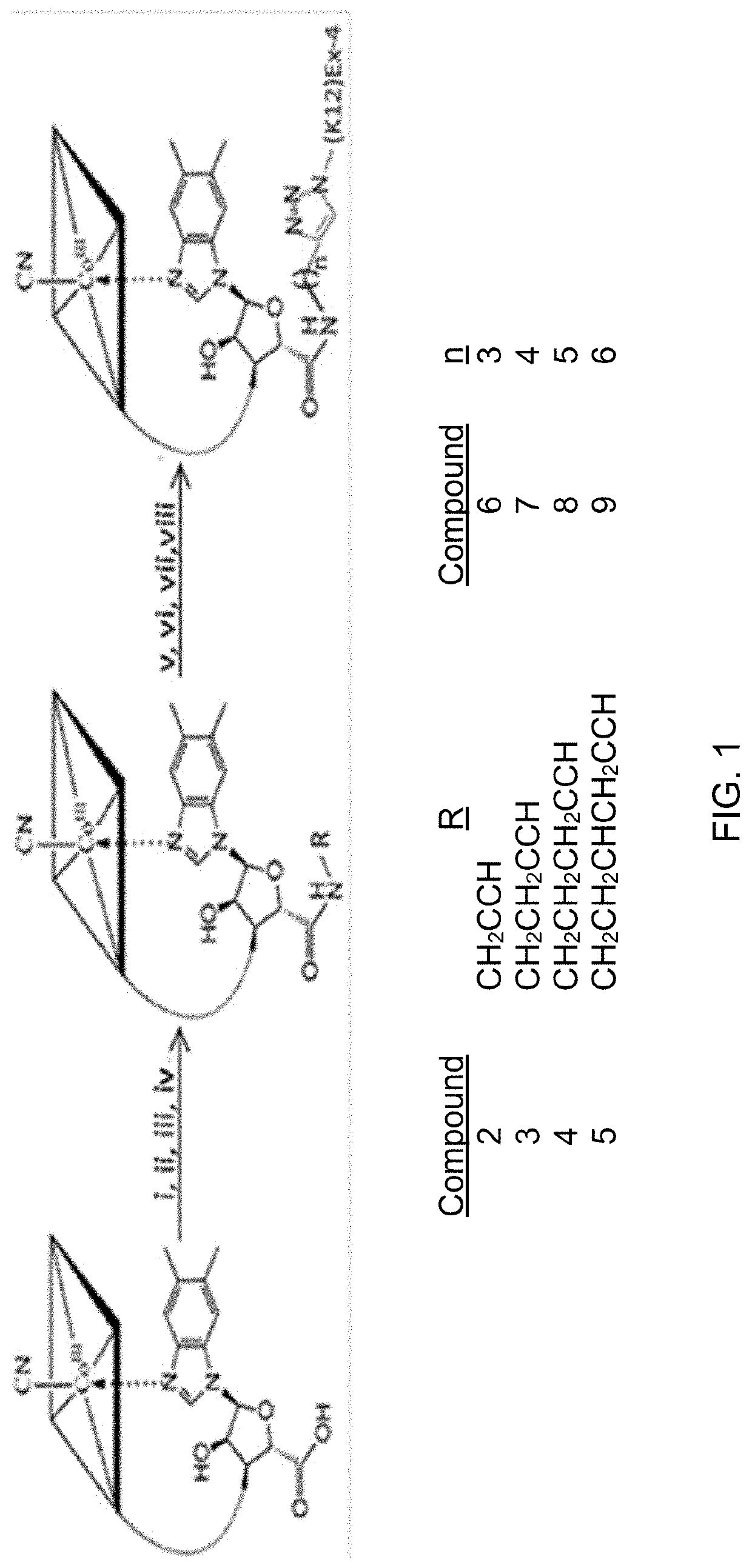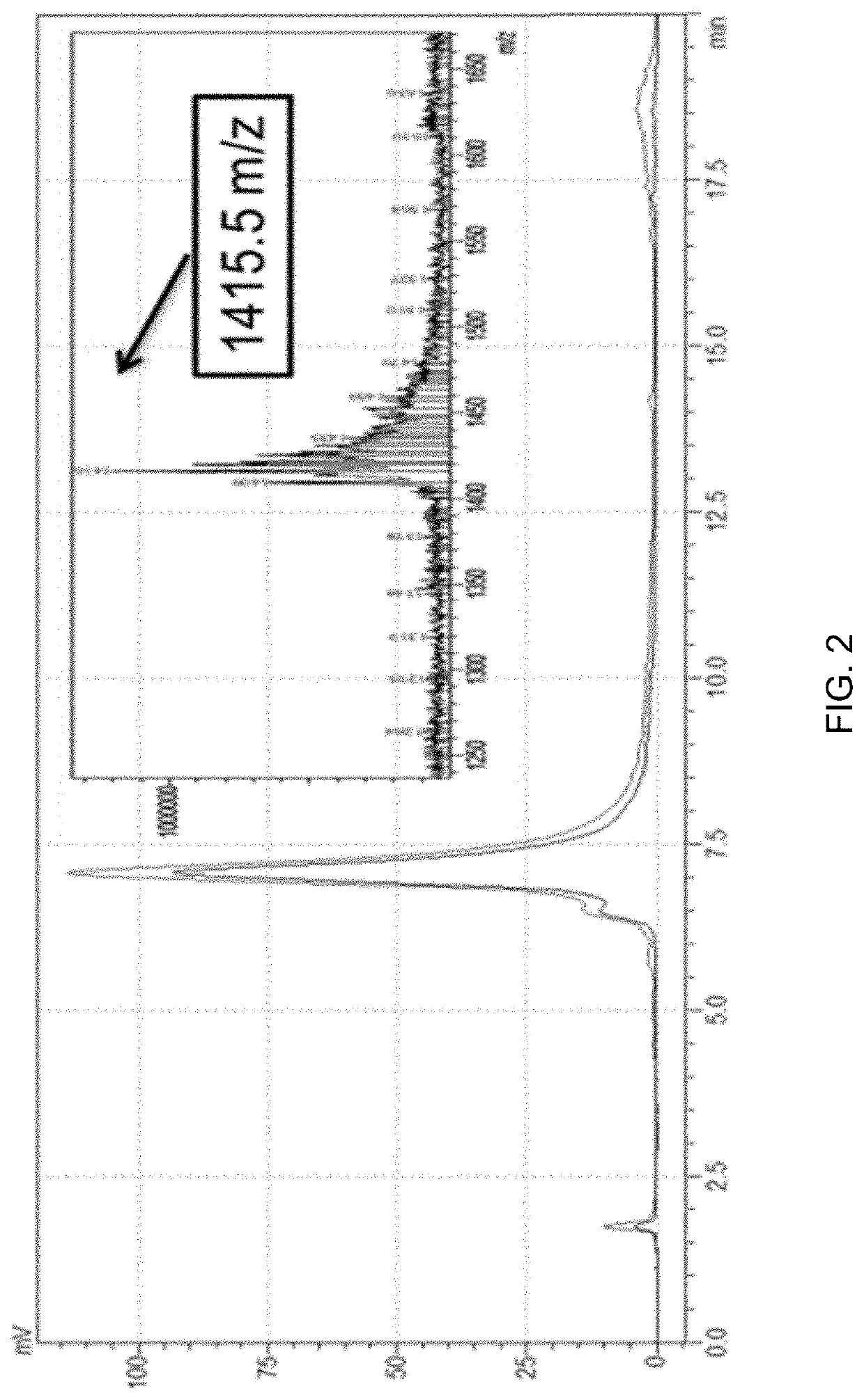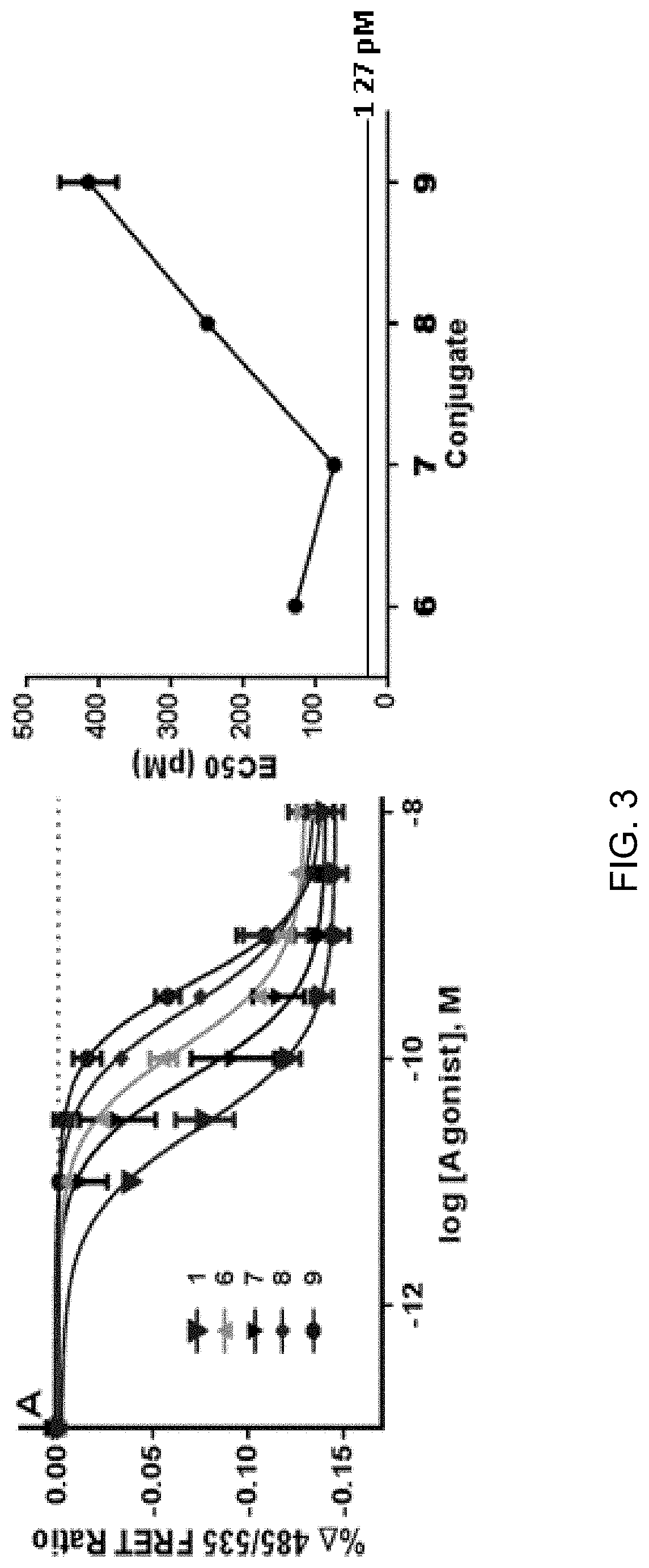Glycemic Control Using Intrinsic Factor Bound to A Vitamin B12 Conjugate of a Glucagon-Like Peptide-1 Receptor Agonist
a technology of glucagon-like peptide and intrinsic factor, which is applied in the field of lowering blood glucose, can solve the problems of beta cell resistance of beta cells and other problems, and achieve the effect of overcoming resistan
- Summary
- Abstract
- Description
- Claims
- Application Information
AI Technical Summary
Benefits of technology
Problems solved by technology
Method used
Image
Examples
example 2
ion and Characterization of 2-5 and 6-9
[0082]Compounds 2-5 were purified by RP-HPLC using a C18 column monitoring at 360 nm. A mobile phase of 0.1% TFA water was used with a flow rate of 1 mL / min and a gradient of 0-13% acetonitrile over 13 minutes. Compounds 2-5 were then characterized by 1H NMR and matrix-assisted laser desorption ionization time-of-flight mass spectrometry (MALDI-Tof MS).
[0083]As seen in FIG. 2, compounds 6-9 were separated from compound 1 and unreacted B12 on a C18 column monitored at both 280 and 360 nm. A mobile phase of 0.1% TFA water was used with a flow rate of 1 mL / min and a gradient from 20-42.5% acetonitrile for 3 min then 42.5-47% acetonitrile for 12 min. Isolated conjugates 6-9 were confirmed by electrospray mass spectrometry (ESMS) with that of compound 7 shown as representative in inset in FIG. 2. Note that the small shoulder on the front side of the LC trace was also found to be consistent with the target conjugate (compounds 6-9) and is consistent ...
example 3
nd Function of Compounds 1 and 6-9 Against GLP-1R
[0084]Synthesis of compounds 6-9 was achieved in high yield (>90%) with greater than 95% purity in each case. Each conjugate was analyzed for function at the GLP-1R using Hek-GLP-1R cells incorporating a genetically-encoded FRET reporter, AKAR3. Upon binding of the GLP-1R, cAMP production is up regulated, which in turn activates protein kinase (PKA). PKA phosphorylation of AKAR3 results in a decrease of 485 / 535 nm emission FRET ratio. FIG. 3A shows dose response curves and EC50 comparison of compounds 6-9 with compound 1 as a control. The most potent conjugate compound 7 had an EC50 of 68 pM followed by compounds 6, 8, and 9, which had EC50's of 121, 246 and 405 pM, respectively.
[0085]It appears from FIG. 3B there is a decidedly optimum spacer distance, with the shortest and longer distances resulting in reduced GLP-1R agonism. It is possible that interactions with the peptide, structural modification of the peptide or indeed interfer...
example 4
f 1, 7 and IF-7 on Glucose Tolerance in Male Rats
[0087]The effect of compound 7 on glucose tolerance was measured to verify Ex-4 function in vivo was not disrupted by B12 conjugation. An IPGTT (intraperitoneal glucose tolerance test) was done in male Sprague Dawley rats. The rats were administered saline (negative control and test vehicle), compound 1, compound 7, or IF-7 an hour prior to bolus glucose administration.
[0088]As seen in FIG. 5, the IPGTT showed that saline had no function and compound 1 showed an initial hyperglycemic response consistent with that reported in the literature and attributed to SNS activation. Glucose levels were noted to subsequently drop below baseline levels at ˜90 minutes. As a surprise, especially given the improvement in function observed in our studies with B12-PYY3-36, compound 7 showed no function in vivo, essentially modeling the saline negative control. A likely cause of the loss of GLP-1R agonism might be serum binding of TCII with subsequent ...
PUM
| Property | Measurement | Unit |
|---|---|---|
| mass | aaaaa | aaaaa |
| mass | aaaaa | aaaaa |
| temperatures | aaaaa | aaaaa |
Abstract
Description
Claims
Application Information
 Login to View More
Login to View More - R&D
- Intellectual Property
- Life Sciences
- Materials
- Tech Scout
- Unparalleled Data Quality
- Higher Quality Content
- 60% Fewer Hallucinations
Browse by: Latest US Patents, China's latest patents, Technical Efficacy Thesaurus, Application Domain, Technology Topic, Popular Technical Reports.
© 2025 PatSnap. All rights reserved.Legal|Privacy policy|Modern Slavery Act Transparency Statement|Sitemap|About US| Contact US: help@patsnap.com



